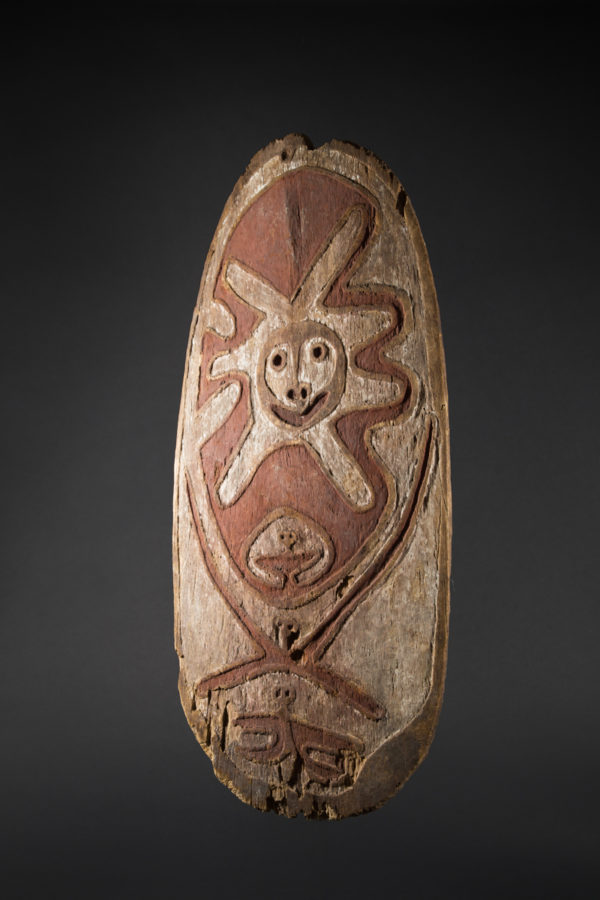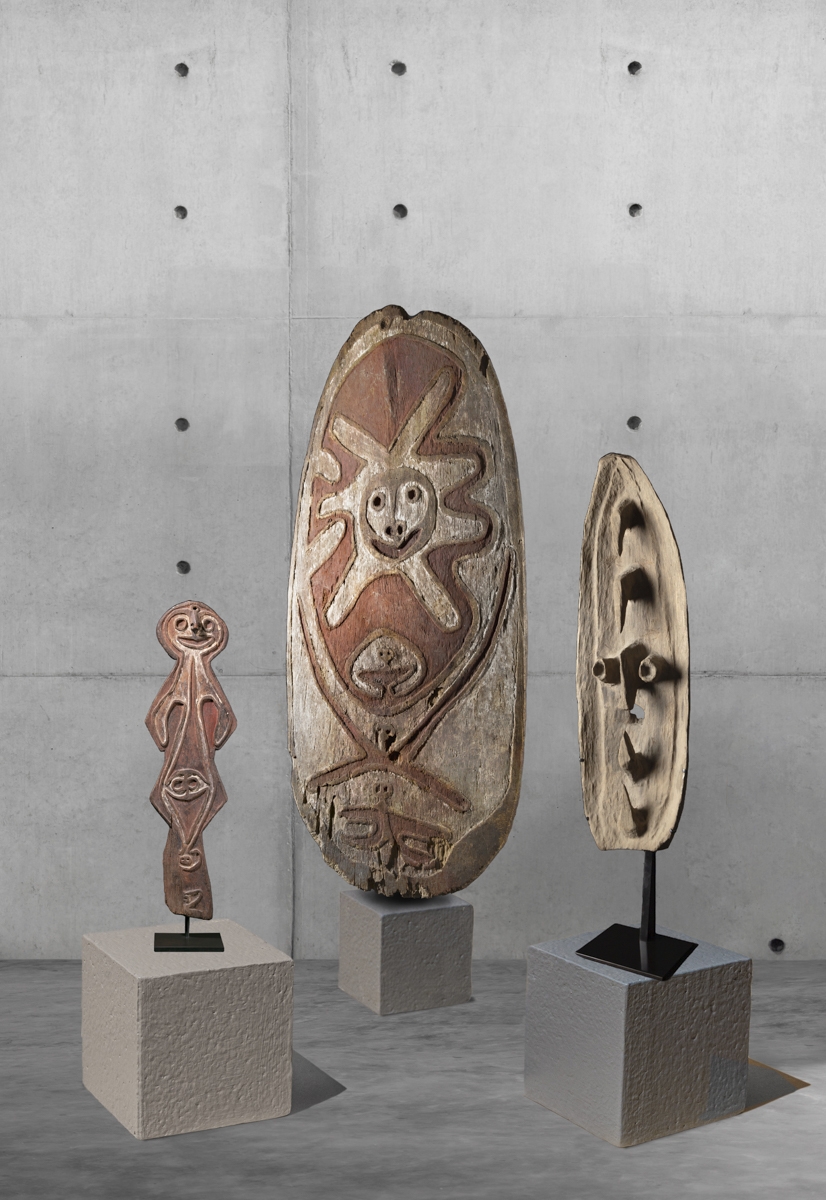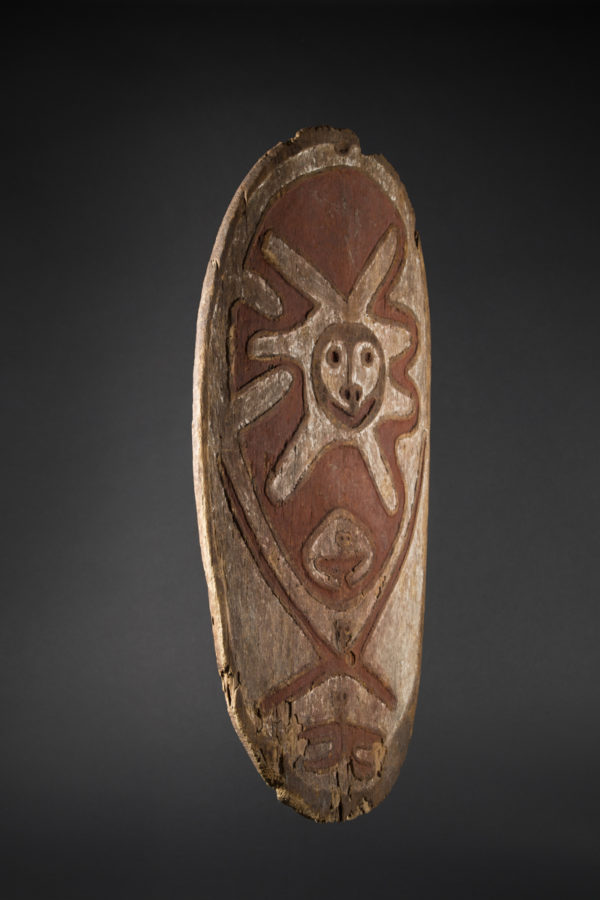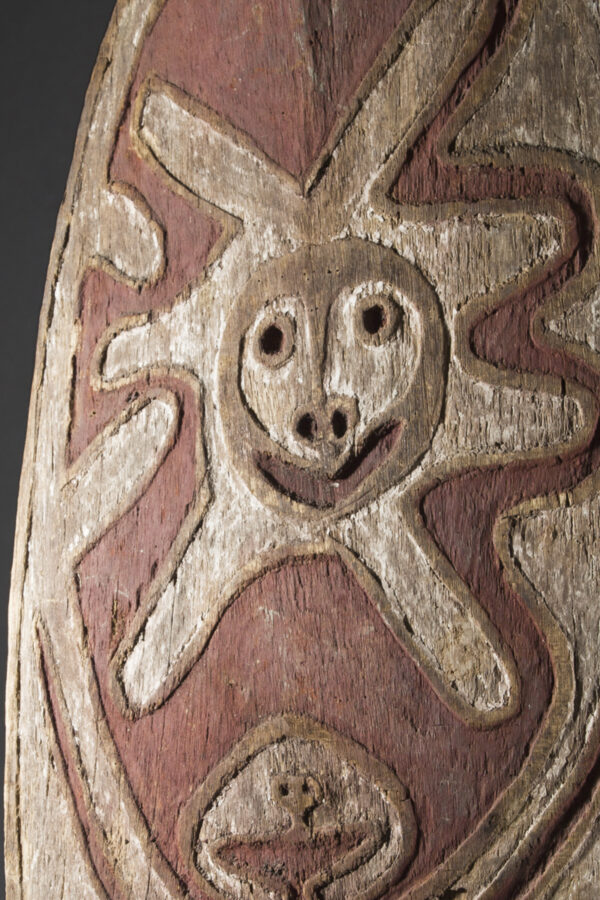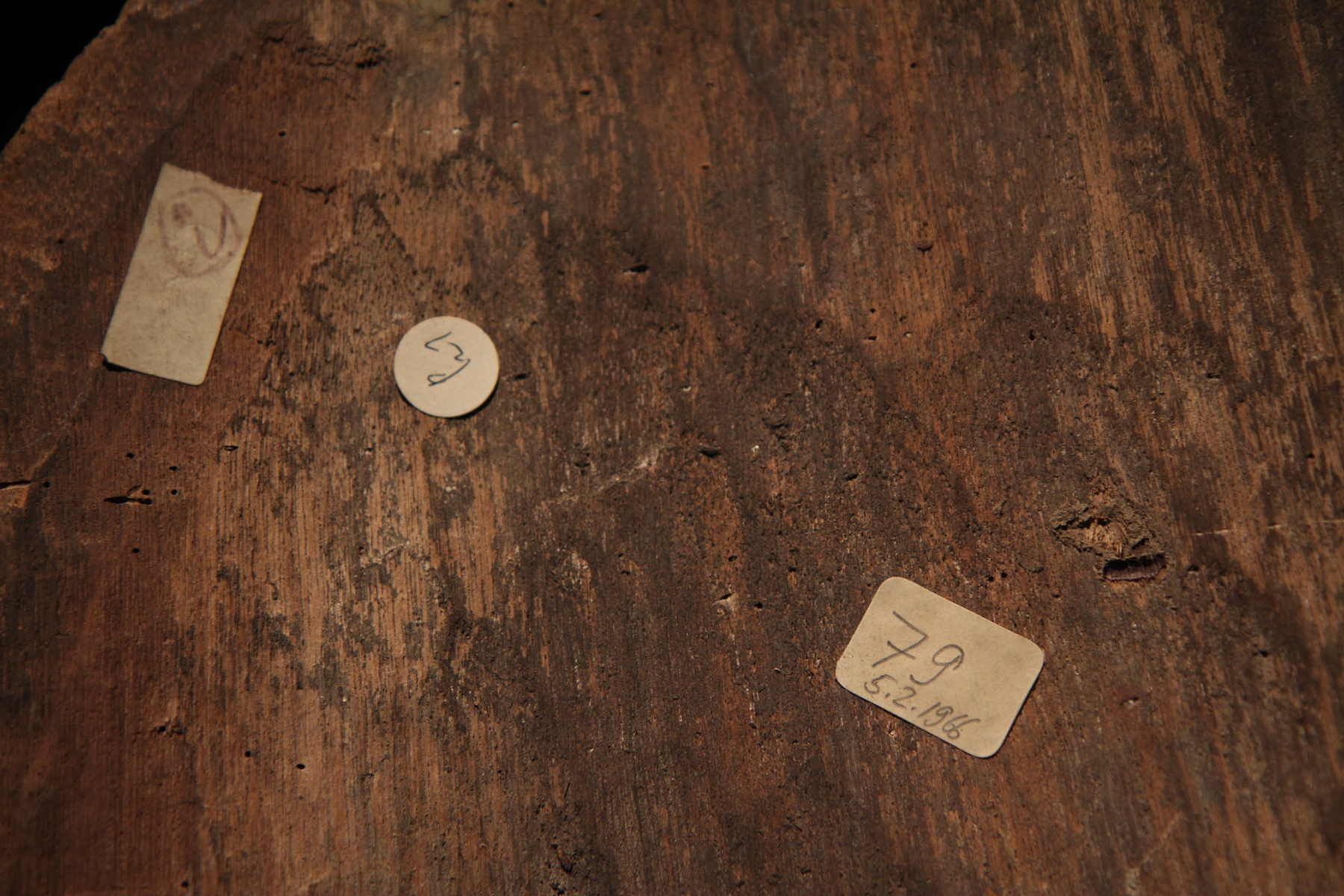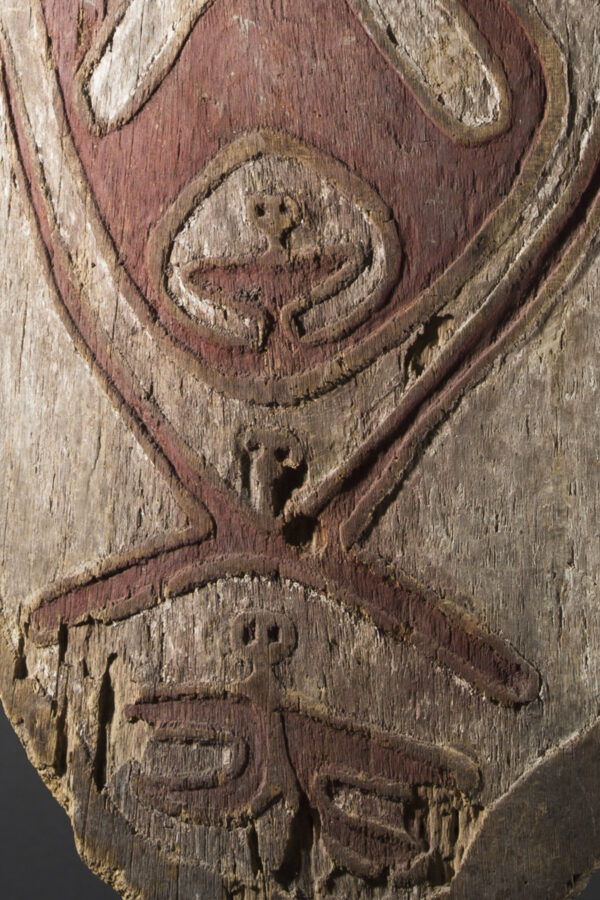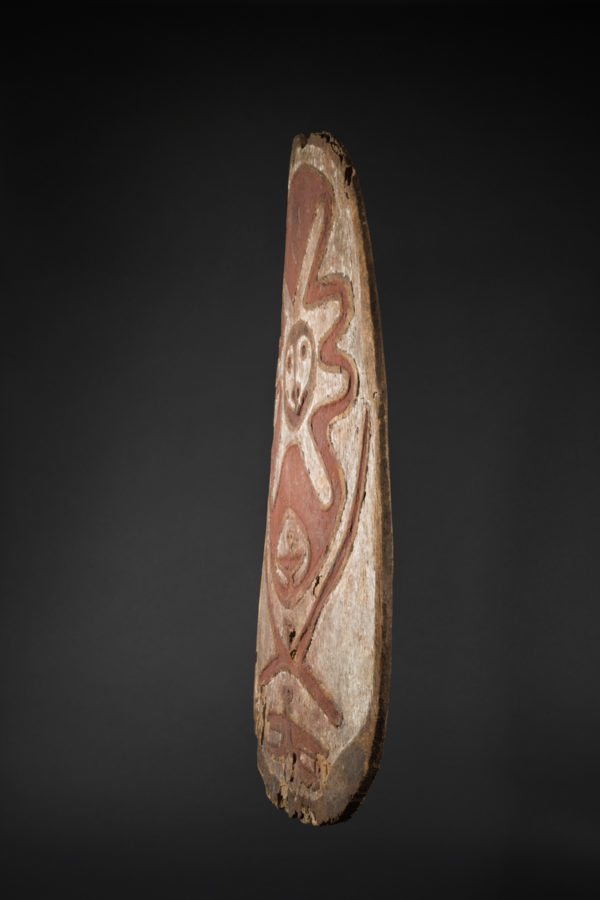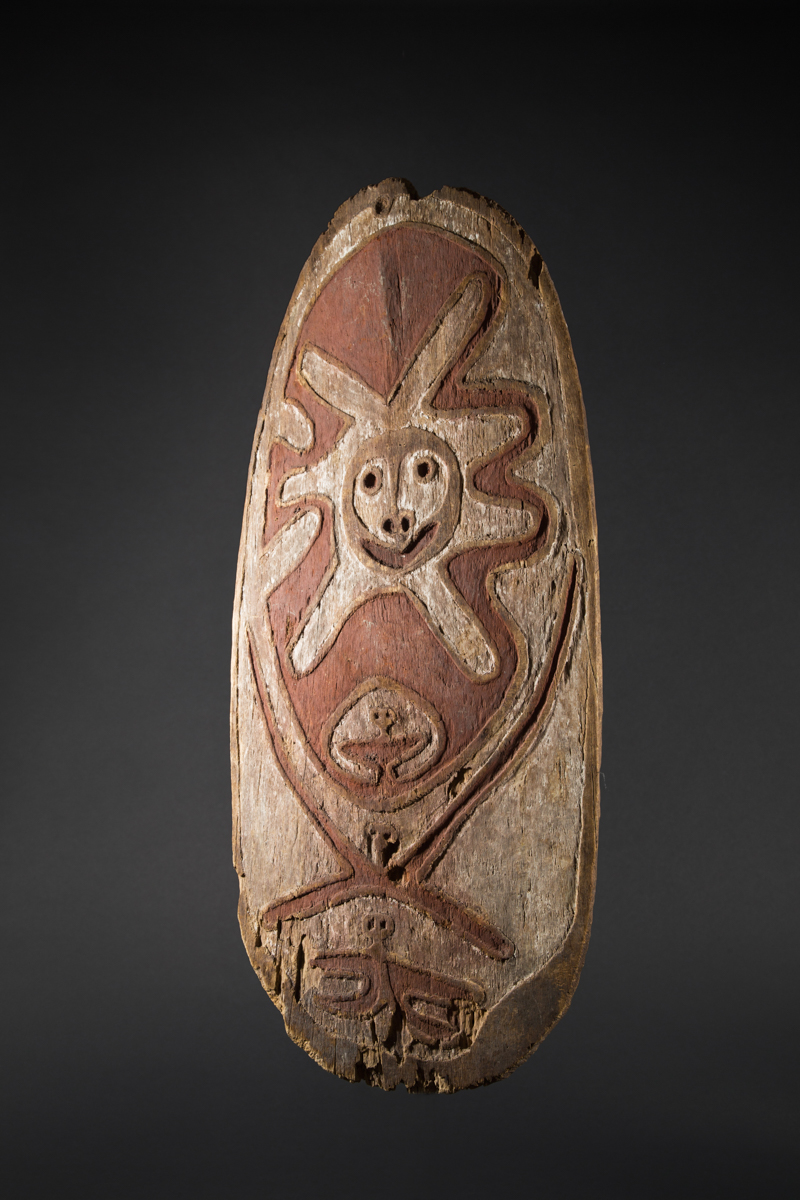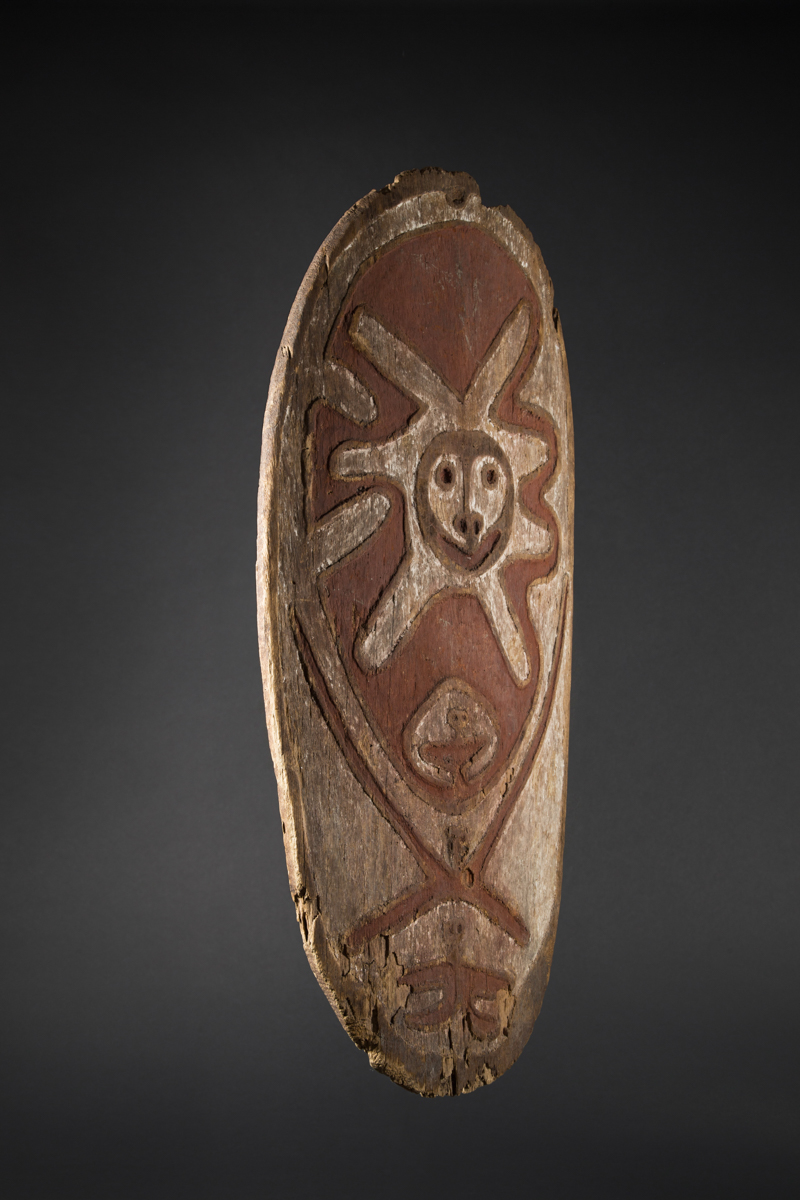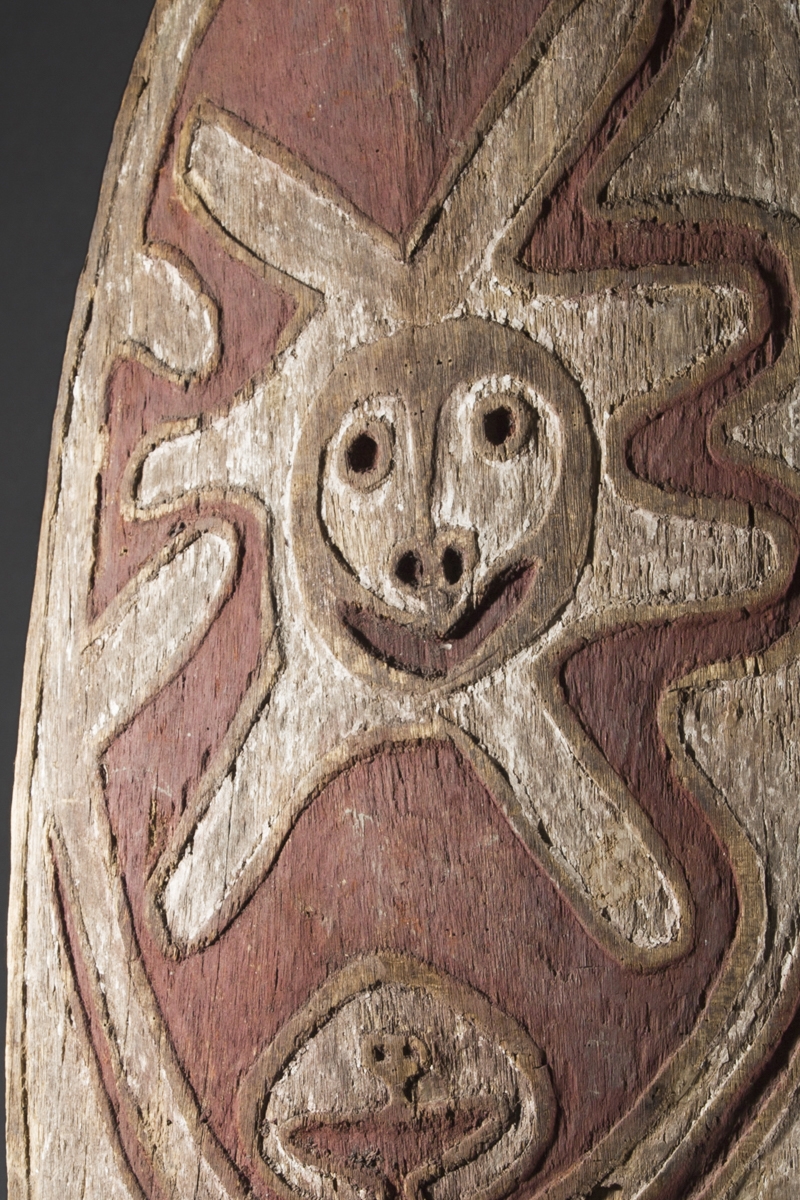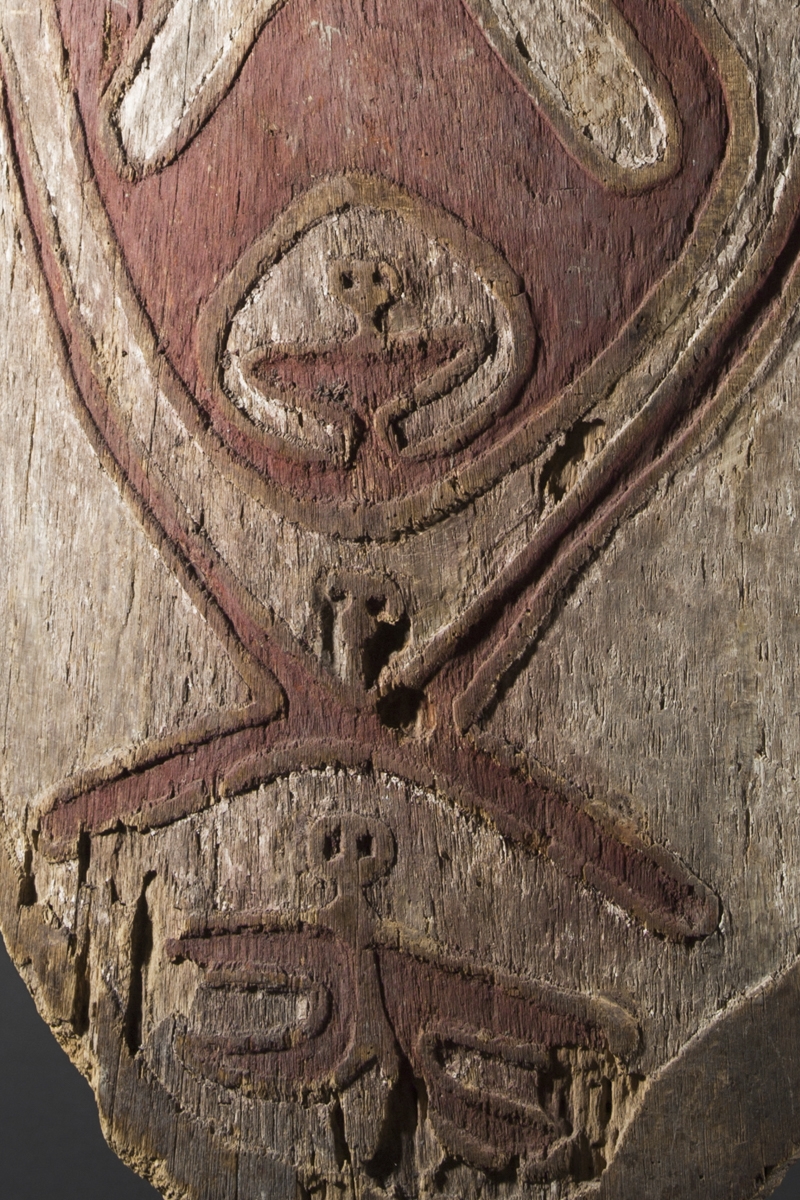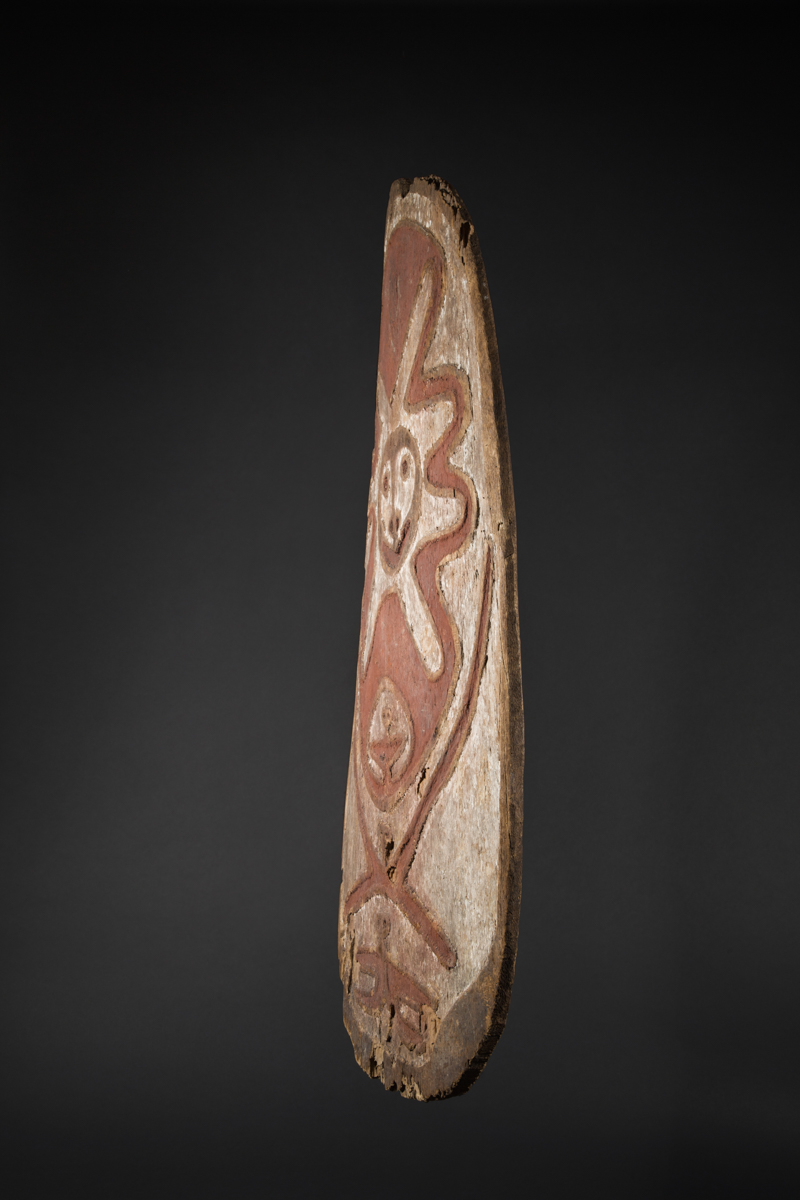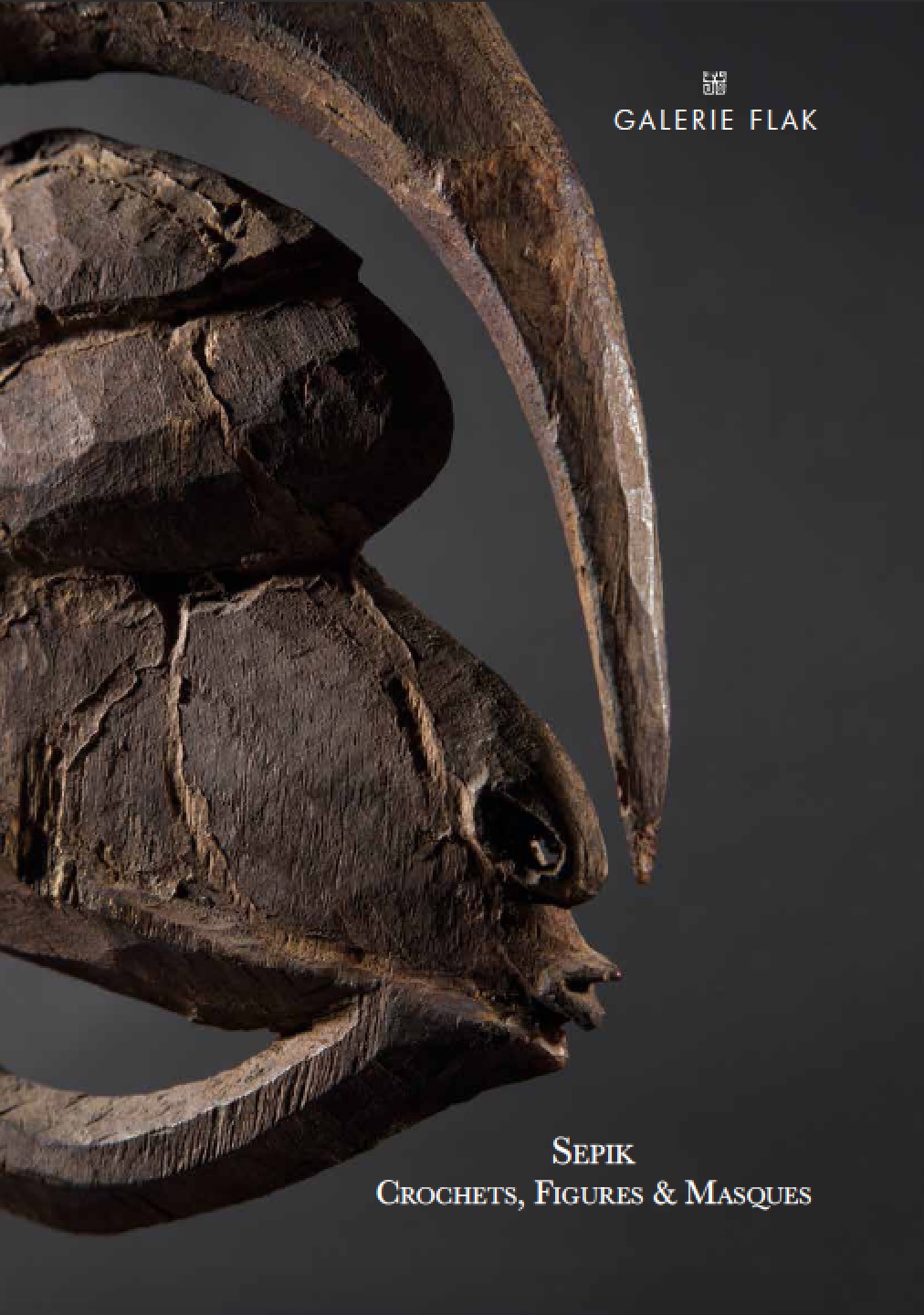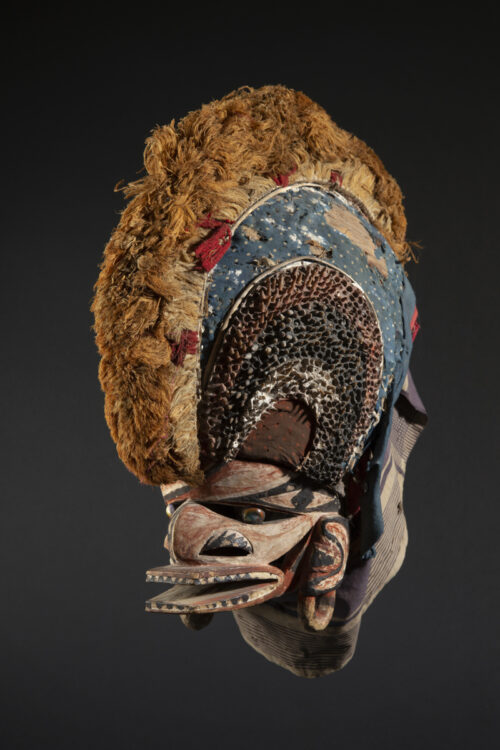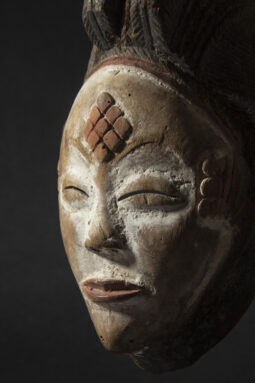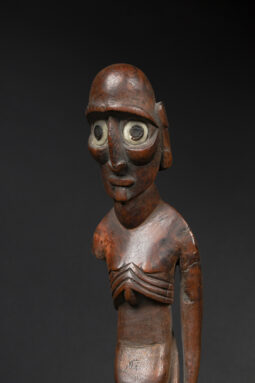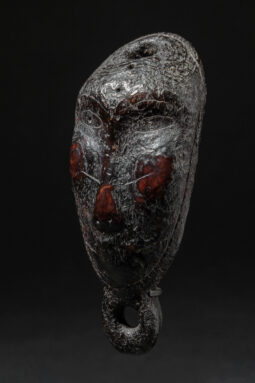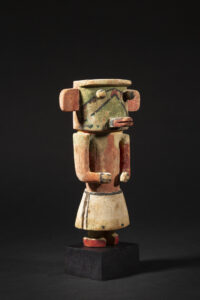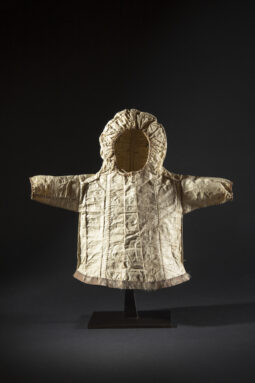oceania | Papua New Guinea
Gope
Papua New Guinea
Gope spirit board
Omaumere village, Urama Island
Papuan Gulf
Carved wood, natural pigments
Late 19th – early 20th century
Height: 40 ½ in. (103 cm)
Field-collected in February 1966 by Thomas Schultze-Westrum
Ex collection John A. & Marcia Friede
Gope ex Schultze-Westrum / Galerie Flak
Price on request
As described in "Coaxing the Spirits to Dance" (Hood / Metropolitan Museum), in the past, the primary focus of religious and artistic life in the region was on powerful spirits (imunu). Each imunu typically was associated with a specific location in the landscape, rivers, or sea, and was linked to the specific clan within whose territory it dwelt. Papuan Gulf wood sculpture was primarily two-dimensional, consisting of board-like carvings, known as spirit boards (Gope or kopé), and figures with designs in low relief. Villages formerly had large communal men's houses divided into cubicles, each allotted to a particular clan or subclan. Every cubicle contained a clan shrine, which housed the Gope spirit boards, figures, human and animal skulls, and other sacred objects associated with the clan's various imunu.
Documentation
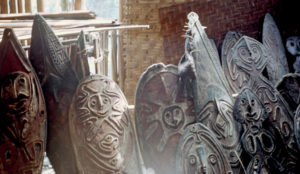
Attached field photograph by Thomas Schultze-Westrum: Omaumere Village, Urama Island, February 1966, courtesy M. Hamson
Publication
Explore the entire collection
